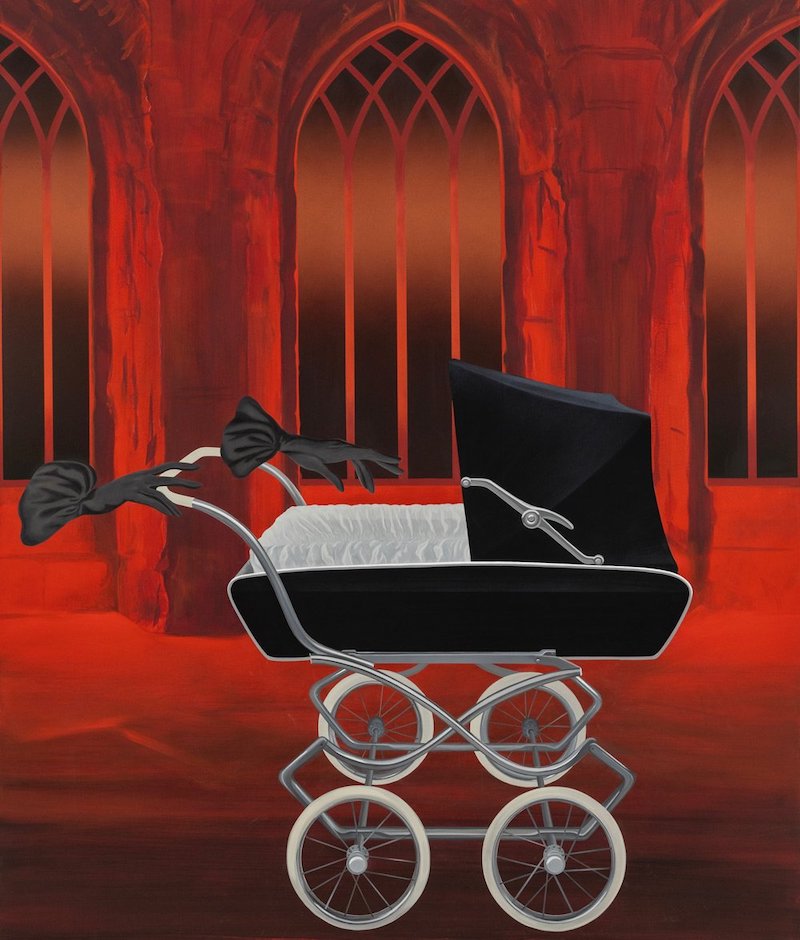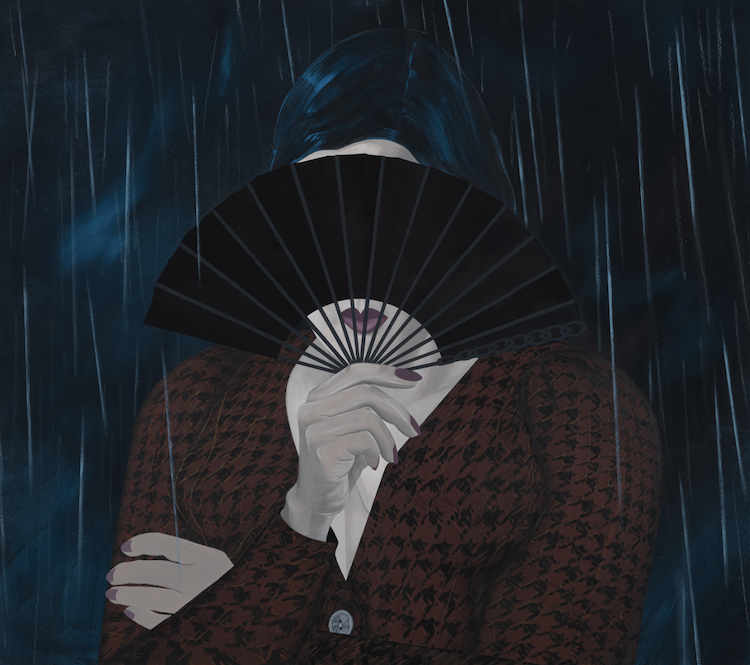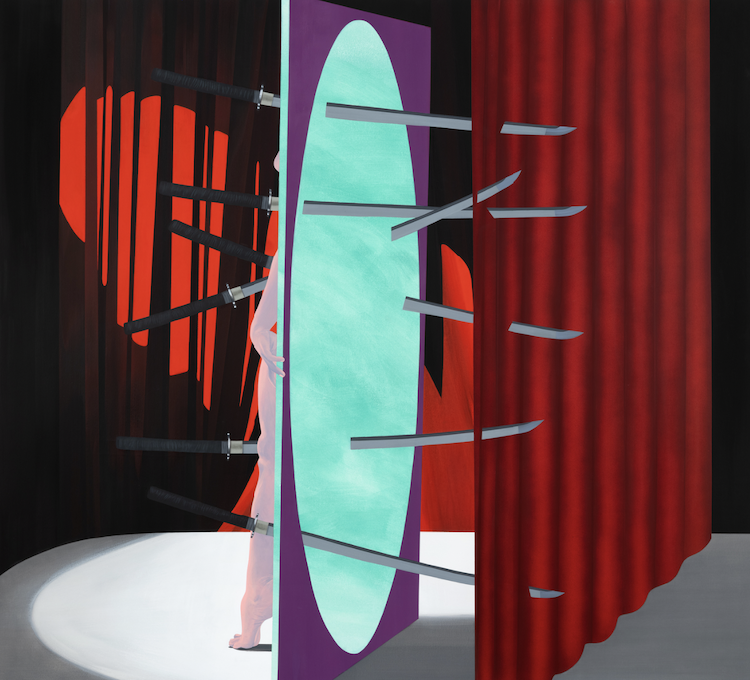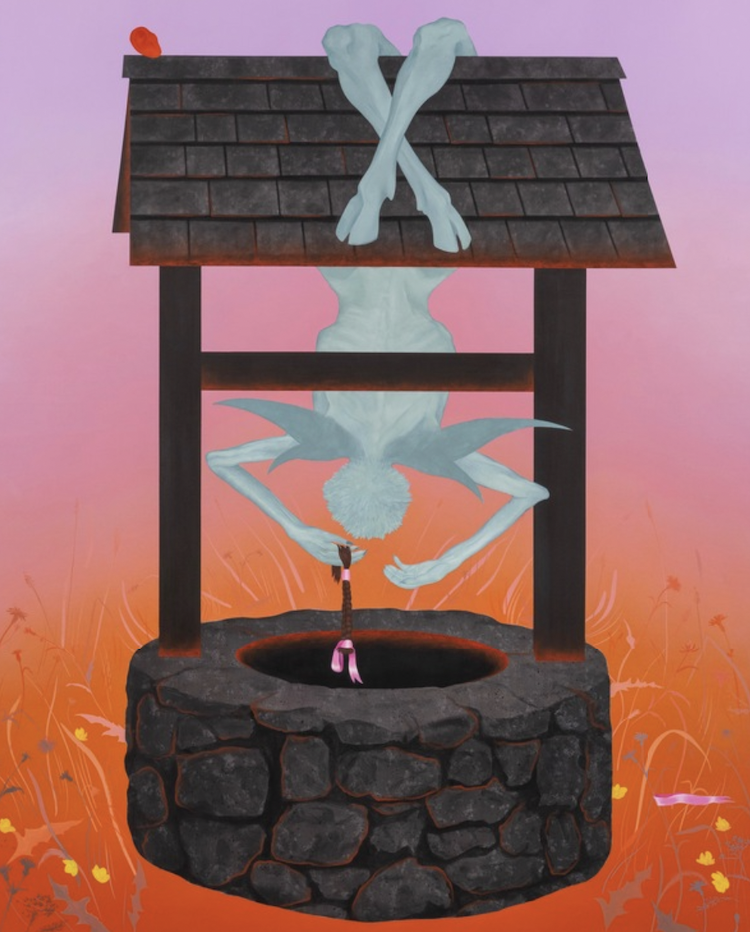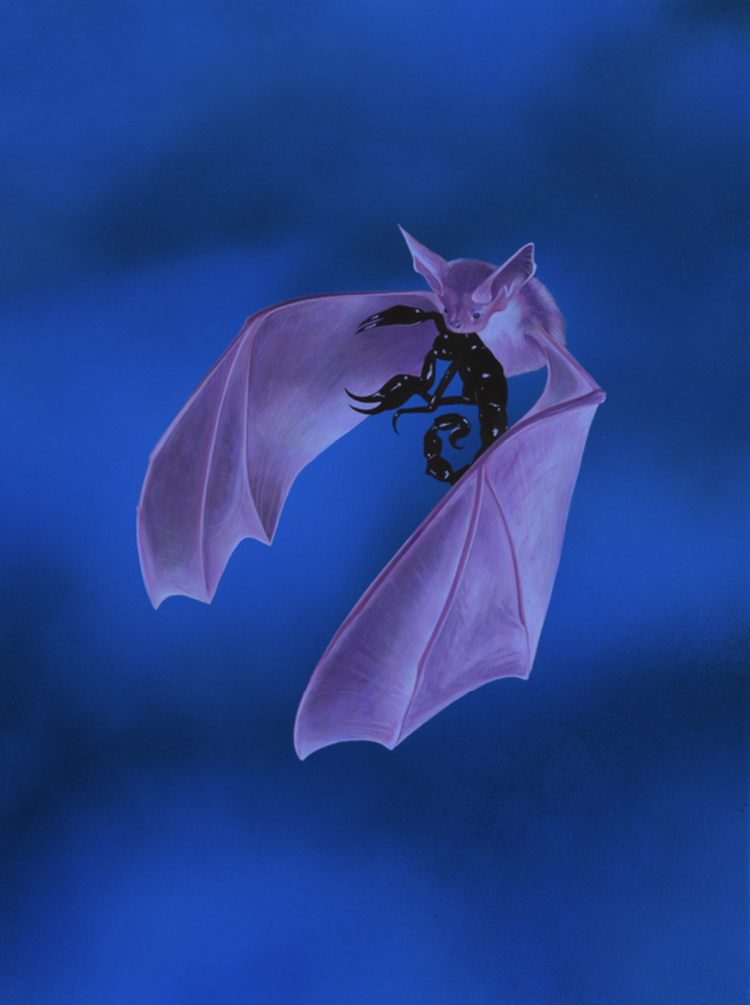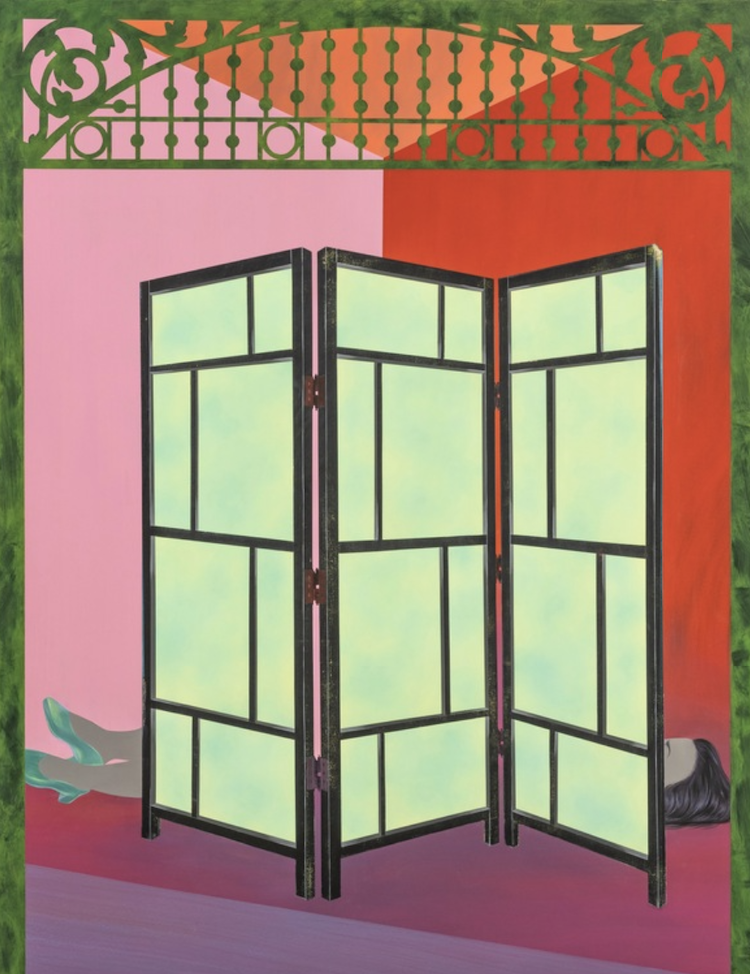Arsenal Contemporary Art New York is pleased to present A Spell for Refusal, a solo exhibition of New York based artist Opal Mae Ong. The suite of paintings included in this exhibition has been produced during a yearlong residency with Arsenal art contemporain Montreal.
In her work, Ong is interested in recurring themes of healing, grief and longing. Her paintings are the result of a slow and methodical process in which elements are placed judiciously amongst carefully planned compositions. Over the course of several weeks, the artist constructs, deconstructs and reconstructs her paintings; adding and subtracting elements to achieve perfectly ambiguous and hypnagogic scenes. Drafting from fiction just as much as her own experience, Ong weaves elements from her personal memories, dreams and visions with a vocabulary that borrows from popular culture, exalting images pulled from poetry, novels, songs and / or films.
As a result, all types of strange characters populate the artist’s paintings. In Apparatus of The Tongue a hoofed and winged character offers a bowed lock of hair to a water well in the hope of attracting good luck while a floating pair of elegantly gloved hands push a baby stroller in a piece titled Original Joy. In A Spell for Refusal, an ominous cloaked figure is being serenated by a ball-chained violinist-skeleton.
In other pieces, figures appear to be swaying between emergence and disappearance, seemingly visible and on the edge of vanishing. Such is the case with A Silence that Comes Back and Silk’s Sororal. Other characters are only partial visible like in Bitch’s Maldoror and Gone is the Ritual as if undecided if they aspire to be acknowledged or left alone.
Painted in a vibrant palette of rich hues, ranging from deep indigoes to flushing scarlets and gleaming periwinkles, Ong’s playful visual narratives are imbued by gloom, anguish and dread. Despite the foregoing, the artist holds on to optimism as she instils in her figures a unilateral sense of hope and trust. How else to heal or grieve than by cooperating with suffering? Afterall, don’t we say per aspera ad astra: through adversity to the stars?



